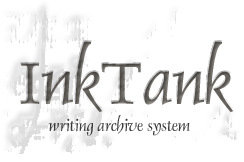

These instructions assume that you have a web host ready for InkTank. Please verify your webhost supports each of features listed under Deployment Requirements on the Project Info page. If you've decided to give InkTank a try, read on…
InkTank requires a database to store its stories and its data. The first step is to create a database that will hold InkTank's data.
(InkTank currently only supports MySQL officially, because most providers offer it. PostgreSQL support is in the code, and if your provider supports Postgres, and you know what you're doing, you could use it instead. However Archangel doesn't support PostgreSQL, so you’d have to port it over too.)
Let's create the database. The steps depend heavily on which webhosting provider you use. I've included instructions for DreamHost, and for generic cPanel-based providers, which includes many of the cheapest ones.
If you're using DreamHost.
DreamHost makes it all pretty quick. If you use DreamHost, you'll be pleased to know they support everything InkTank needs—after all, I wrote InkTank for a DreamHost server in the first place.
Congratulations, in an hour or so your database will be ready for access!
If you're using a cPanel-based provider.
Your webhost should provide everything InkTank needs. Because cPanel-based hosts vary somewhat, these steps may change somewhat at a future date (now being December 6th, 2003).
Apply the schema.
Both cPanel-based providers and DreamHost provide phpMyAdmin, software which can apply the InkTank database schema. On DreamHost, simply access http://your databaser server/. On cPanel hosts, you can access phpMyAdmin on the bottom of the MySQL page. Log in with your admin username and password. phpMyAdmin may not work until your webhost's time delay is up, so if you can't log in, go exercise for a while.
You will need a copy of the database schema — the set of rules that tell the blank new database how to store InkTank data. It's contained within the InkTank Web distribution zipfile available on the Project Downloads page.
No errors? Congratulations, you have a working MySQL/InkTank setup! Go get yourself a snack (some orange juice and grapes, if you're me), and continue on to the InkTank Web instructions, where you will install and configure the PHP-based web browsing interface for InkTank.